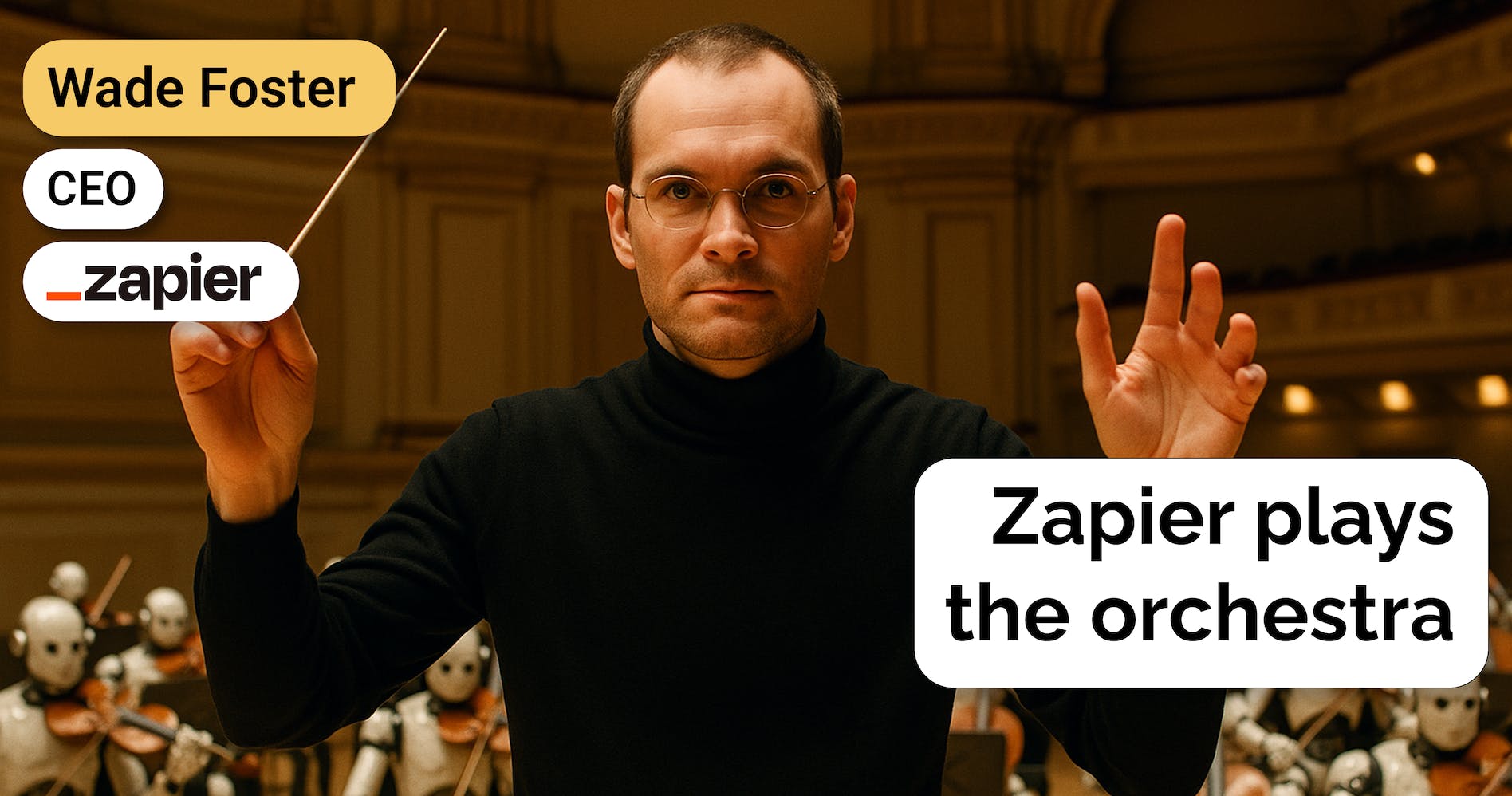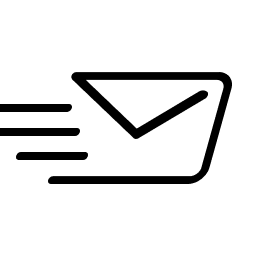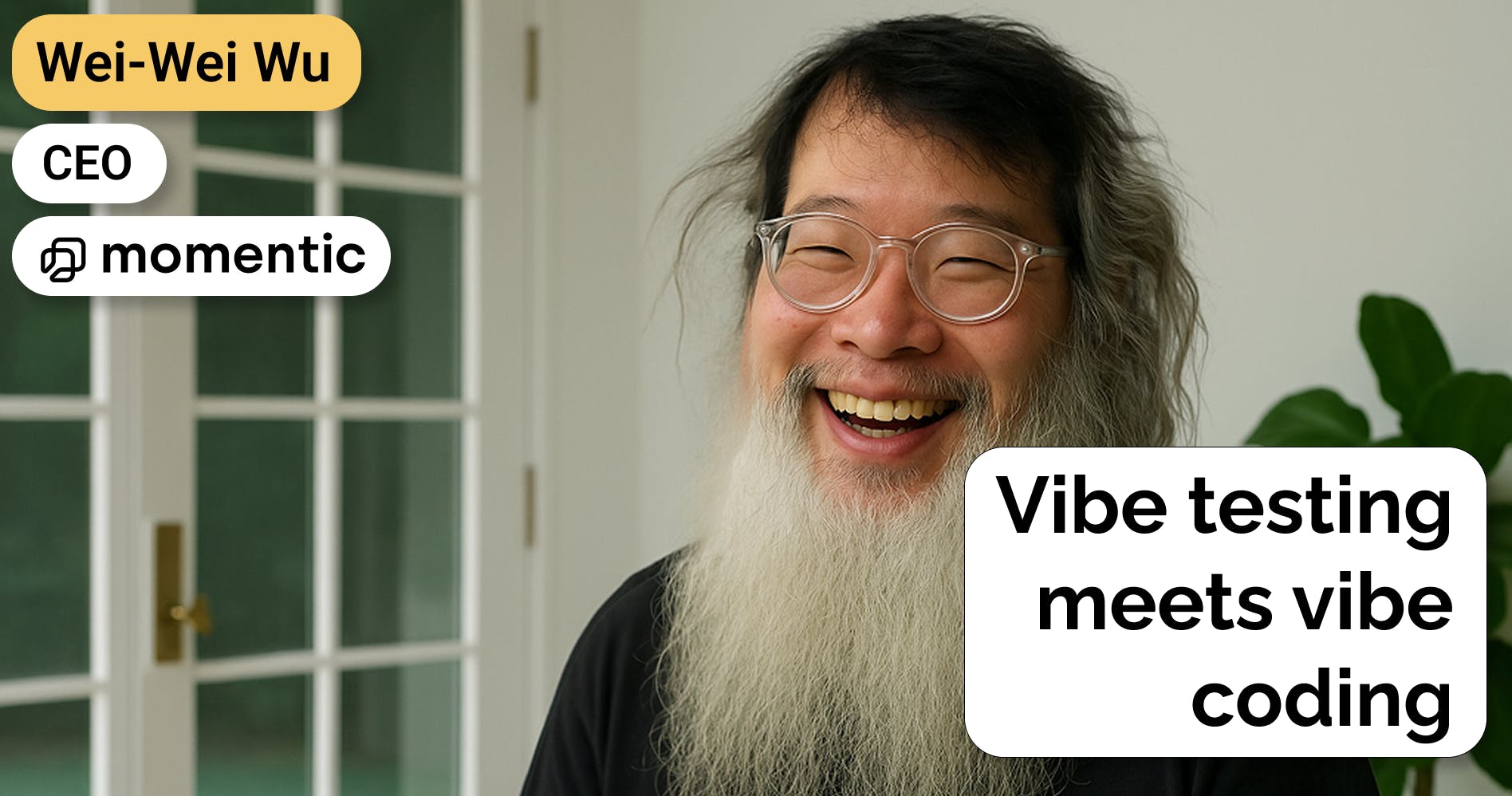Jon Noronha, co-founder of Gamma, on building AI-powered slides
 Jan-Erik Asplund
Jan-Erik Asplund

Background
Jon Noronha is the co-founder of Gamma. We talked to Jon to learn more about two intersecting trends that Gamma sits at the center of: 1) startups taking on Google Apps and Microsoft 365 with new takes on slides and docs, and 2) the rise of generative AI creating new interfaces for creating business work products.
Questions
- Gamma started as a kind of Notion for slides which made it easy to create slides—to be presented and read. Today, Gamma is one of the leaders in the new category of AI-powered slides. Can you walk us through that journey? What were your key learnings along the way?
- Was there a moment with GPT-4 that changed your perception of GPT-3 as a party trick? Where did this moment change?
- What is the nature of customer demand for AI-powered slides? What do customers want that AI is the solution for?
- Can you share what your initial product-market fit looks like? Any particularly strong or surprising use cases? What milestones have you hit?
- Is AI more about reducing friction or is it about augmenting creativity? Where does AI most reduce friction or augment creativity in the customer experience—generating content, layouts, images or elsewhere?
- Is the AI in Gamma more to solve the blank page problem like in Jasper and Copy.ai, or, is it expected to produce a production-grade final product? Where is it headed in terms of full AI vs. human in the loop?
- How do you get to the final finished product?
- WYSIWYG "democratized" design and created several large companies like PowerPoint (slides), Mailchimp (email) and Canva (social media images). Gamma has a copilot interaction where the user chats with an AI design partner. Is this the next iteration of WYSIWYG in terms of making design more accessible? What are the advantages and drawbacks of the copilot interaction model?
- With regard to the chatbot in particular, it's not just chat or open-ended chat. Does Gamma have rich, embedded widgets inside that maybe give options or allow you to do some point-and-click inside of the chat? How do you see that window evolving beyond just text?
- Can you share about what your AI stack looks like? Do you have any key vendors? Do you do any reinforcement learning? Where have you put the most time into tailoring the AI to be purpose-fit for Gamma?
- How do you position Gamma with respect to Tome? How should we think about how the neo-slides space (with other players like Pitch and Beautiful.ai) and AI-powered slides space are converging or diverging?
- What can Gamma do with AI and slides that would be very challenging for Google Slides and Microsoft PowerPoint to pull off?
- Gamma is built for digital rather than to be printed on paper or even exported as a PDF unlike Google Slides or Microsoft PowerPoint. Are cards plus AI greater than AI applied to standard slides? How so?
- A Google Apps or Microsoft 365 user might have all of their documents in Docs or Word, which a user could bring into Slides or PowerPoint in a single click and use AI to generate a deck. How does Gamma win as a point solution versus as a productivity bundle given that much of the AI thesis is around remixing / auto generating content off of existing content?
- On the flip side, do you feel that the natural trajectory of Gamma is something akin to what Canva has done—focused on their customer who may be a marketer that can't design and expanding across different mediums? Will Gamma start eating up different mediums and different use cases and build out a suite itself?
- Gamma also has the web page as a form factor, not unlike how Notion documents also get used as web pages. Can you talk about the opportunity for expansion into web pages?
- If everything went right for Gamma over the next five years, how do you see what it becomes? How has the world changed as a result?
Interview
Gamma started as a kind of Notion for slides which made it easy to create slides—to be presented and read. Today, Gamma is one of the leaders in the new category of AI-powered slides. Can you walk us through that journey? What were your key learnings along the way?
We started the company back in 2020. At the time, this idea of the future of work was blooming.
Everyone was locked down at home. Zoom was already big, and just blowing up even more and more. Loom was spreading like crazy. There was this feeling that anything was possible with these tools.
Our goal was to reinvent the slide deck.
The very core of the idea was really not even about making slides—it was about what it feels like to sit through slides as a viewer. It’s like, “We spend God knows how many hours every day in meetings just watching slide decks happen.” We thought that this linear, sequential experience of reading bullet points on a screen felt incredibly obsolete at that moment.
A lot of our original thesis was around interactivity, audience participation, and blending this idea between synchronous and asynchronous.
With presentations, you've got the live meeting, but you’ve also probably got people who want to pre-read the content ahead of time. There was this whole idea at the time that we're not going to the office anymore, therefore, maybe we shouldn't even have live meetings. We should all become these fully distributed asynchronous companies.
That was where we started. I still think there's a lot of good ideas in that, but obviously, a lot of the changes we saw during the pandemic didn't quite stick the way we all thought. The future of work slipped back into the present in many places.
I still think we were right about one of our core ideas—that the slide deck was obsolete and that there was appetite out there for something different.
Notion definitely inspired us a lot. Notion took the Word doc—this incredibly classic thing that was the lifeblood of an organization—and they successfully reinvented it as something new by doing less instead of more.
AI came into the story later. We were aware of AI's potential here from the very beginning, but it didn't come into play for us at the beginning because it just wasn't that good yet. We actually used GPT-3 right at the start of founding the company, but it was still kind of a party trick—it just couldn't actually do that much that was interesting yet.
We were also originally focused much more on the consumption experience, like—“What does it mean to actually read one of these docs?” I was playing with using AI to summarize long docs or slide decks into something short and consumable.
It didn't occur to us that AI could really transform the creation experience, nor that that was where its real potential was. That's something that I think dawned on us more over the years as we built out the product and scaled it over time.
Was there a moment with GPT-4 that changed your perception of GPT-3 as a party trick? Where did this moment change?
Last summer, we were at a point where we’d come a long way as a product. We had launched into a public beta and had maybe thousands or tens of thousands of users. We were starting to learn what was actually resonating about the product.
It turned out that our original thesis of changing the experience of consuming slides was a bad way to build a business because you need the creator to be the one who is totally enlisted and excited about this thing. The reader doesn't get to choose what they're reading at the end of the day; it's the writer who gets to choose how they write. That's obvious in hindsight—startup lessons.
We had already started to realize we needed to rethink our focus and focus really on just having a very streamlined creation experience. For us, that meant really leaning even further into this idea of hybrid doc-slides.
When we launched that summer, our slogan was, "Write like a doc, present like a deck." The insight there was that making slides is a painstaking visual process that’s intimidating to a lot of people. It requires a difficult mix of writing skills—which not everyone has—and design skills—which almost nobody has—and you have to be able to do both those things together to get your ideas across.
Just as we’d crystallized this core problem—“How does anybody express these ideas with confidence when it's both time-consuming and intimidating?”—AI was starting to advance like crazy.
What really made it click for us was seeing how fast image generation was improving. The moment Stable Diffusion came out, which was around August of 2022, we started to realize AI was just totally changing the design process.
It turns out that relatively quietly—well before GPT-4 or ChatGPT—OpenAI had been steadily improving just plain old GPT-3. That's where this GPT-3.5 moniker came from.
We went back in, I was trying prompts I had tried maybe a year before, and I was getting much better results. Twitter was starting to light up with more and more people talking about what you could do with prompt engineering and so, it started to dawn on us that we had just reached this new zone of possibility with AI.
From that point, we started in maybe summer to fall of last year just constantly tinkering with new AI prototypes. In November-ish, ChatGPT came out and as we all know, it became a sensation after that.
What is the nature of customer demand for AI-powered slides? What do customers want that AI is the solution for?
I want to answer that in two parts, because I want to talk about the hype as well.
First, let's talk about the real value under the hood.
The blank page problem: it’s the idea that creating a slide deck is so intimidating that it's the sort of task people put off throughout the week. You try to get to anything else on your to-do list before you get to it, because there's just this huge activation hump you have to get over to even create it.
Then, there are all these sub-parts of it: how you structure your ideas in a way that's going to resonate, how you visually design everything, where you can find a template, outlining and writing out all the content, and then editing once you realize your content doesn’t fit the template.
AI is unbelievable at just navigating you all the way through that maze in one go. It fast forwards you right to the end, and while it won’t make something perfect, it's so much easier to edit it and tweak it and often skip through a bunch of work you would've thrown out anyway once you have that skeleton. That's where a lot of the real value is.
What's surprised probably every company in this space has been the amount of hype that's come along, and much of that hype is just a self-serving social media factory.
However, there's another thing going on here too. We’re trying to reinvent this core part of the work suite. You can think of it essentially like the MS Office suite—it's incredibly hard to break in.
What AI has done is give many companies a chance to break the blockade of Office, and to a lesser extent, Google, around the core productivity suite. We've seen multiple companies fail at this over the years, or fail to live up to their ambitions—a good example here is Prezi, which maybe 10 to 15 years ago had a huge spike of excitement around this idea of replacing slides. But ultimately, I would say it has not replaced slides, even though it is still chugging along as a business.
Where AI comes into the picture is that AI gives people this sudden reason and ability to try out a new tool and get to something really solid. It also changes the onboarding process.
One of the biggest reasons we wanted to focus on AI last summer was that we realized our biggest challenge in growth was that first activation. People would come into our product, log in, and watch a short video tour saying what our product was. Then, we'd drop them into a blank slide deck and say, "Good luck."
If they had a very concrete idea they were trying to work on and if they already had their outline in mind, then they might start working and might get that aha moment. But the percent of people getting to that aha was very low.
The whole reason we focused on AI was to solve our activation rate problem and get a much higher percentage of people to an aha moment in their first five minutes.
It turns out AI is incredibly well-suited to solving that problem.
Can you share what your initial product-market fit looks like? Any particularly strong or surprising use cases? What milestones have you hit?
I mentioned we had an initial launch last August that had a lot of our core functionality. Then we did this relaunch in March that added a bunch of AI generation features.
The difference between our original launch in August and our launch in March was like night and day.
We thought our August launch went great because we were the number one product of the day on Product Hunt, and we got maybe 10,000 people total to sign up. It was the classic thing where there's this immediate jump after signup and then it cools down. Our growth rate at that point was relatively linear.
When we launched our AI features, it went viral in a way that we hadn't really expected. In just the first few days, we started going from hundreds of signups a day to more like 10,000 signups a day.
What was most surprising about it was that curve—instead of falling back down to Earth as it usually does, it just kept rising and rising, to the point that the numbers felt comical a lot of the time.
Now it’s sustained. We’ve had millions of signups at this point. Recently, 50,000 people signed up in a day. It's also been hugely international, which has been unexpected.
The world has around eight billion people in it, and a lot of them make slides, I guess. All over the place people are hearing about this thing and they are actually activating. What it comes down to is the virality of it, which is that you can see what this product does so quickly now. You sign up. You describe the name of a presentation you want to make. Either we suggest one or you do it. Then it just types it before your eyes.
Going back to that hype thing, there's just this true magic moment that you can experience very quickly. People are telling other people about it without us having to do any real marketing. So yeah, we've been blown away by it and still can't quite believe it's real.
Is AI more about reducing friction or is it about augmenting creativity? Where does AI most reduce friction or augment creativity in the customer experience—generating content, layouts, images or elsewhere?
Both are certainly true and what we're excited about. However, I will say, before we launched, we were more excited about the augmenting creativity aspect. We really were so psyched about this idea of your AI design partner, of having this world-class slide designer in your pocket, essentially, which can help you through everything.
But I would say, frankly, the thing that's had the bigger impact on our business, and really seems to draw user excitement, is the blank page aspect. That is the thing—the aha moment—and what people are coming back for again and again.
I’ve mentioned how we don't see ourselves as just a slides tool. We never have. We've always been this hybrid thing that combines aspects of slides, docs, and webpage. That's where we see most of this farther frontier of people unlocking new creativity or potential.
We've had a couple of our users now who've said, "Oh! I used to find making a slide deck so unpleasant, but actually I just used Gamma to make an entire ebook." Or, "Oh! I'm actually making a personal website with it now." That's where AI starts to unlock these things that I never would've even thought of creating. Certainly, that's probably the one that gives us more long-term excitement.
Is the AI in Gamma more to solve the blank page problem like in Jasper and Copy.ai, or, is it expected to produce a production-grade final product? Where is it headed in terms of full AI vs. human in the loop?
The biggest thing I've learned about slides and websites is that content and design are really inseparable. You can't think of it as, "Oh! I do the content and then, I slap a design on it." Or, "I slap a design on and then, I just fill in the content." It's this Rubik's Cube problem where, as you change the design, it messes up your content, or as you change your content around, it messes up your design.
That Rubik's Cube aspect is actually what makes it so hard for people, which is, they might be okay at one of those, but trying to solve that combined problem is really tricky. AI lets them jump between those things very quickly.
This is actually where I think the chat part of our product has resonated most, where people can have for example, a paragraph and they can say, "Redo this as a timeline." That's a visual change—it's drawing squares and lines on the page, but also rewriting the text to feel more timeline-y along the way, which a human could have done, but they might not have necessarily thought of how.
There's also this related aspect of how it can generate a large number of variations, so it's like, "Give me four ideas for how I could make this more visual, like, timeline, bullets, pictures." Even when it’s just searching for the pictures—we've all done the open Google image search in one tab, pull in things, and then, you're like, "Oh! I don't actually want the pictures after all. I just wasted all that time." I think that answers maybe that part.
How do you get to the final finished product?
The funny thing is, many people come in with AI and generate something. Then they actually find themselves just going back to manually editing and using it in some ways more like a traditional tool after that.
Although the biggest shock to us of our launch was because our launch was so AI-centric in the messaging, and because it went so viral, a huge number of our users didn't realize we had manual editing in the product at all. It just didn't even occur to them that they could change the content. They thought it was only AI.
Our Intercom blew up with just people saying, "How do I change the words?" We're like, "Put your mouse in and type."
Part of that also was we did not expect the volume of interest on mobile that came with our launch. It probably came from just social media hype but we hadn't built mobile editing, we only had mobile viewing. However, people were coming on mobile to make something with AI and AI could do it all on mobile. Then, they said, "Okay, this is pretty good, but let me change it."
There's also this phenomenon that there are a lot of these AI products that just got started in the few months after ChatGPT came out. These were basically ChatGPT for X, ChatGPT for slides, for websites, for documents. They generally have, like us, a very cool onboarding moment where an AI writes something for you, but then the product just ends and it's no fault of theirs. It just takes years to build all the depth that goes behind the product, and they haven't had those years, yet.
I think users have actually become conditioned to expect AI products to be quite shallow, like, "The AI generates something, but I just get to look at something pretty and move on." So, we are having to educate people that, "No, no, no, this is a real thing you can use. You can go do the rest of it." That's actually one of our training challenges right now.
WYSIWYG "democratized" design and created several large companies like PowerPoint (slides), Mailchimp (email) and Canva (social media images). Gamma has a copilot interaction where the user chats with an AI design partner. Is this the next iteration of WYSIWYG in terms of making design more accessible? What are the advantages and drawbacks of the copilot interaction model?
My sense of it is still evolving over time. I don't know if I know the answer yet. I certainly don't think that chat or co-pilot type interfaces can replace WYSIWYG and this relates to the problem I said of people getting confused. We see people using chat to say, "Make this word bold," Or, "Change the color of this to blue," where chat just doesn't seem like the right tool for the job, and yet people reach for it because they have it open. It's just so much easier to use your mouse or to type stuff or whatever it is.
Where a co-pilot really seems to come in well though is there are certain types of tasks that WYSIWYG is not great for—such as larger scale rewrites or edits. Rewriting a whole paragraph out is hard for a human. Or: "Take this horizontal thing and make it vertical. Take this timeline and make the markers be different."
It also works really well in situations where there's a lot of repetition involved. So far, what I'm seeing is that the co-pilot is more of a complement—something that fills in the gaps where WYSIWYG isn’t so good.
The other thing is, when most people hear WYSIWYG, they imagine dragging around boxes to fit on top of each other, because that's what we do in tools like PowerPoint or Canva. The subtle difference with Gamma very early on was we actually never built that interface. You can't actually drag a box into place in Gamma. We were inspired by Notion, a much more writing-based interface where things are vertically stacked and the primary interaction is typing. You can certainly still use a mouse to drag stuff, but primarily you're typing and things are automatically flowing around.
There's a couple reasons we chose that.
The biggest one was the fragility of WYSIWYG dragging interfaces, which is that a good designer can make something good, but the moment they hand it over to the marketer or whatever and touch it, it all falls apart. We've all seen the sales deck that is just butchered through multiple iterations of changes.
The other thing about it that's maybe more subtle is that it's not responsive, meaning it works well for one very particular view type, but when you try to morph it to anything else, it breaks. So, for us, early on, we had this idea that, yes, you're making a presentation for a desktop or a TV, but it also should work on your phone. So, we wanted things to automatically reflow when you went to mobile. Now that we're focusing more on websites, we're very glad that we had that mindset early on with slides.
The nature of responsive design though is that it's actually not WYSIWYG. It's pretty much impossible to deliver WYSIWYG because what you get is different depending on what sort of device that you're on.
We've actually made some very intentional departures away from WYSIWYG to make that viewing experience better. This is actually an area where I think AI and copilot experiences can work better, where sometimes in development people talk about WYSIWYM, which is, what you see is what you mean.
That's more of the approach we've taken with Gamma and it's one that AI can help with, because AI can help with fuzzing things in different screen sizes or whatever, to match your intentions.
With regard to the chatbot in particular, it's not just chat or open-ended chat. Does Gamma have rich, embedded widgets inside that maybe give options or allow you to do some point-and-click inside of the chat? How do you see that window evolving beyond just text?
Chat is most successful when it is more than just typing text into a box. It's also more successful when it's more than just receiving text back in that box. Looking at our product, I’d say, the most successful parts of the chat experience are the ones that are actually triggered by a mouse and not a keyboard.
What I mean by that is, we have various places in our product where you can do things like click on an image and say, "Show me alternatives." Or, there's a button where you can just highlight text and say, "Turn this into a different layout." Like, "Make this a table or make this into a timeline." Or whatever. Then, it actually opens our chat interface and makes a first suggestion. If you want, you can tweak it.
There's another example where there's a button in between the slides in our product—we call them cards—that says, "Add card." You can add a blank card or you can say, "Add with AI." If you hit, "Add with AI." it will open the chat interface and say, "What do you want this to be about?" You give a one-liner and then, it will fill in a first draft of the card. You can then talk with the card and say, "Change this." Or, "Change that." So, I think there's something to be said for these half chat experiences here: chat is the co-pilot that is augmenting a point-and-click type interface. The richer the widgets that get inside, the more you can do with it.
Can you share about what your AI stack looks like? Do you have any key vendors? Do you do any reinforcement learning? Where have you put the most time into tailoring the AI to be purpose-fit for Gamma?
Most people would be surprised how shallow our AI stack is. That reflects the fact that we are in such early days in this technology. For many things that we do, there just was not a tool yet in place to do it at the time that we launched.
Now I'm meeting lots of cool MLOps companies and hearing what they're doing, and I'm like, "Damn. I wish this existed three months ago.” Or, sometimes, "I wish this existed now and it wasn't just a demo."
At the time we launched, our AI was very simply just calling out to OpenAI's ChatGPT API to power everything. We've since augmented things.
For example, for our chat experience, we chained together multiple different AI prompts. We classify your message and then depending what you do, route you into multiple different prompts. We're starting to chain together a combination of text prompts and image prompts to get what we need. We've actually been hosting more and more in Azure rather than OpenAI.
We're starting to do more and more to evaluate our AI stuff. When we were first building a lot of this stuff in February or March, we didn't have any users and so it didn't really matter if we broke anything. We could just mess with it and see what happened and test it ourselves.
Now we're at the point where we are generating millions of decks a month and we're also generating revenue. So, suddenly those things are not just a toy but drivers of our entire business.
When I think about changing our prompts or making a modification, it's become very scary. I suddenly have this feeling that we have this million line code base with no tests on it, because that's what building an AI feels like. So, we are talking with lots of these smaller stage LLMOps companies to see who can help us monitor and observe and evaluate these things as we go.
We're also starting to look into fine-tuning. I will say, I've been surprised how well our prompts have worked without their own RLHF or fine-tuning. We generally just rely on few-shot examples in prompts and really spend a lot of time tuning those prompts.
One of the things that we built shortly after launch was our own prompt studio— something where we could basically pull in many, many example inputs and outputs and change around our prompts and see how they impact them. But now we're at the point where we have millions of input/output pairs.
I think fine-tuning will work a lot better and I'm constantly watching the state of open source models to see when these will be good enough that we can replace some of our standard GPT stuff with fine-tuned models that achieve the same thing without having to throw so many examples in.
How do you position Gamma with respect to Tome? How should we think about how the neo-slides space (with other players like Pitch and Beautiful.ai) and AI-powered slides space are converging or diverging?
It's certainly something we've been following a lot and trying to make sense of, ourselves. Broadly speaking, I would break that space into two buckets.
On the one hand, I think neo-slides is a good term for what Pitch and Beautiful.ai are doing, which is they are basically trying to take slides, do better slides and they've been pretty successful at that. There are genuinely better ways to make slide decks than some of the existing tools.
But fundamentally, the thing you were making at the end of the day is a traditional slide deck. It's 16-by-9 rectangles with a lot of other rectangles and shapes on them, that you click through one by one on a screen, generally live. That's one job to be done.
On the other hand, we're probably more similar to Tome in that both products are trying to forge their own medium or their own format. I don't know that we're necessarily trying to create the same kind of medium. When I see Tome's messaging, I hear a lot about creative storytelling and I get the sense that they're really focused on more of a visual designer type persona although, I don't know for sure.
For us, we are often focused on people who struggle to communicate their ideas, who are not necessarily the natural designers or storytellers, but who want a way to get their ideas to shine anyway. What's interesting about both products is, we are both trying to break many of the conventions of the typical slide deck so, we don't necessarily have the 16-by-9 slides.
In our case, we have a lot more interactivity so, you can actually click to expand and collapse things inside the content. Speaking for ourselves, we are glad that we are trying to forge our own path because I think that the space of just plain old AI slide deck generators is going to become competitive and eventually, commoditized, probably.
These companies are doing good work, but we all know that PowerPoint is coming into this space and Google Slides, too. I used to work at Microsoft and I've also watched Google's product development. They're both very effective executors when the time comes. They just take their time with it. We would like to not be standing in the path of that steamroller when that happens.
What can Gamma do with AI and slides that would be very challenging for Google Slides and Microsoft PowerPoint to pull off?
For us, it means that we are very actively trying not to position ourselves as a slide creator. We try not to even use the word slides on our webpage very much or talk about decks, really. We still talk about presentations.
Instead, we are focusing more on product development in the opposite direction of making something that feels more like a micro website. It's not to say that we're necessarily a full-on website builder either, but we are following our customer demand, which is for these smaller, interactive, responsive microsite things, which you can present live and publish online or send async.
We're discovering that there's this niche for this new kind of artifact that people haven't always been creating. Slides are a great hook and entry point. People may come in because they have a slide deck to make, but then they realize they can make a Gamma instead.
We are trying to invest in our differentiation there rather than trying to mirror all of those other slide tools. In some cases it just means that we're focusing on having really good exports. We're not going to build every slide feature there is, but we do have PowerPoint export, so you can get yourself 80% of the way and then, finish it in PowerPoint if you want. That is fine with us.
Gamma is built for digital rather than to be printed on paper or even exported as a PDF unlike Google Slides or Microsoft PowerPoint. Are cards plus AI greater than AI applied to standard slides? How so?
The dream of what we've been trying to create all along is a medium that is actually more powerful and more expressive than what slides can do. So, part of what makes slides so boring to consume is the flatness of them. It's like watching a movie at one frame per minute.
Part of what makes them so frustrating to create is the constraints of the shape. I think a huge part of what makes slides painstaking is, you are trying to fill a space which is like this piece of paper, but also trying not to overflow it. So, you're constantly making these decisions about how to get the exact right number of words and pictures on the page. Often it means that you're putting in pictures that you didn't really need. So, the reason there's a stock photo of a dude in a boardroom talking is that you had a square on the screen that needed something to go in it.
That's where the potential of the new medium comes in. We've always felt like if we could wave a magic wand and just teach 100 million people to make Gammas instead of slides, then, the rest would take care of itself. But we didn't have the magic wand. Ultimately, AI has been the magic wand that lets you fast-forward through those years spent learning how to use PowerPoint, to the new tool. Not to say that we're already there yet for there's still learning curves but AI is what helps advance you to that end state.
The key idea though is ultimately, we still think that actually the cards and the hybrid medium are the real deep valuable things here. AI is more the hook that gets you into it and the accelerator that makes you want to keep using it. But we really hope and we also see some inkling that the thing that actually makes you stay is the medium on the other side.
A Google Apps or Microsoft 365 user might have all of their documents in Docs or Word, which a user could bring into Slides or PowerPoint in a single click and use AI to generate a deck. How does Gamma win as a point solution versus as a productivity bundle given that much of the AI thesis is around remixing / auto generating content off of existing content?
If I could summarize it, what you're saying is, there is a powerful moat that both Google and Microsoft have from being the source of truth for all of your Office knowledge and stuff. They've got it all in there and so, for everyone else coming along trying to tap into it, they don't have access to it. That moat is more valuable because AI can take all those things and now transform them and interpolate them in interesting ways.
So yeah, it's something that we've thought about a lot. The answer actually varies if you think about market segments. The dynamic you're talking about will most benefit Microsoft at the high end of the enterprise. If I think about heavily regulated environments and sensitive information, they're going to be the ones that have access to your most secret SharePoints, where they can run on-premise AI that consolidates all the Office knowledge internally and help, for example, a new hire onboard or help summarize the water cooler of what people are talking about. It'll be challenging for startups to break into it there.
On the flip side though, if I think about maybe the lower end of more SMB or even just less regulated enterprises, where it's more just humdrum tasks like, "Hey! I have a doc that's been written, but I need to whip it into slides in the next 30 minutes to present to my executive," I don't know how strong that moat's really going to be.
Both Microsoft and Google have already been committed to portability of these things. Like, funnily, you've always been able to put a PowerPoint file on a floppy disk, or an email and take it somewhere. We actually already support this. We already support importing a Google Doc from Google Drive, or a PowerPoint file just as a .pptx, and redoing it or transforming it. I don't see that gate in the moat getting drawn up anytime soon.
I think companies will be able to tap into that ecosystem and do things with it particularly at the smaller SMB end where people are very willing to move things between these different suites, transform them, and put them back in over time.
On the flip side, do you feel that the natural trajectory of Gamma is something akin to what Canva has done—focused on their customer who may be a marketer that can't design and expanding across different mediums? Will Gamma start eating up different mediums and different use cases and build out a suite itself?
The most common way that people describe us to someone else is, "Gamma is like Canva and Notion had a baby." It's always a funny feeling to be compared to other companies because you're like, "Oh yeah! That's true in some ways and not true in others."
I think it's actually better to be compared to two companies because we can pick and choose which parts of each of their stories we like and obviously, they're two very successful companies, so it's a good lineage to have if that's true.
Our destiny will probably look like one of those two companies, but they've each had a different spin on it. So, Canva's approach, as I understand it, has been to have one core editing technology and one core library of assets that they apply to all these different shapes and surfaces. You can use Canva to make a business card or a billboard. They're both just rectangles, I guess, and you do different things to them, but still, you're creating these very different artifacts. Every time I see a new Canva billboard, it's just a new artifact that they've created and applied this to, including slides.
Notion is the flip side, where Notion also serves this huge number of use cases, and yet, it is always the exact same thing that you're making. It's a Notion page or a Notion—do they call them databases? But they have managed to find this one hybrid thing that can just be applied to a million different problems. They've created this incredible community and ecosystem of people that are constantly finding new ways to apply that same building block to new stuff.
I think we'll look like some combination of those two strategies though I’m not sure, yet.
Gamma also has the web page as a form factor, not unlike how Notion documents also get used as web pages. Can you talk about the opportunity for expansion into web pages?
Even before we did our last launch in March, we had this idea that there was this huge potential in the area of websites. We already had our power users starting to pull us in that direction. It's a very attractive business to be in, in a lot of ways that slides are not. It's like a long-term, dedicated business user who's willing to pay, whereas slides can be so ephemeral and throwaway, right? So, we already liked it for our own reasons as well.
The irony is that because we had made all of these webpage-y design choices in presentations, like making it responsive for instance, I would describe it as we had accidentally built a webpage builder for slides. We had gone most of the way to webpage without actually calling it a webpage builder and so, when we did our big launch, our video and all the messaging was focused on presentations, but still we had this button in the product where it said, "Create new."
Now you could say, "Create new presentation, document, and webpage" and the differences were mainly subtle differences in the prompt, like the webpage had buttons in it and stuff like that, that were more webpage-y. Yet, we've been amazed by the demand and interest in that, and also by the sheer volume of people asking us, "How do I take my Gamma and actually publish it as a webpage?"
Someone described product market fit as when people are literally pulling product out of you, and that is how we feel about webpages. People are desperate to turn their Gammas into webpages and so, it's probably our biggest area of focus right now.
That said, I don't know if that means that we're building a Webflow competitor. I'm not sure if we can or should do that. What I've learned is that the world of webpages is vast, and there are so many different kinds, from these huge sites with incredible numbers of animations and transitions or thousands of pieces of content, to very simple, single-serving landing pages. So, just like we've charted our own path in slides, we'll be charting our own path in webpages as well, and deciding which part of that we're going to focus on.
If everything went right for Gamma over the next five years, how do you see what it becomes? How has the world changed as a result?
When we were very early on in our user research for Gamma, I remember just hearing a quote from someone that's always stuck with me, which was, "I know that I have good ideas, but I don't think my slides say that." I certainly felt that. I think we've all felt that and of course, it transcends slides.
There's the expression, "Don't judge a book by its cover." We're talking about webpages now and everyone who's making a webpage is also very self-conscious about their digital presence as well.
I think all of us constantly have to sell our ideas, and that word “sell” sounds kind of crass. It's not necessarily that we're selling a product, but ultimately, we have some idea that we're trying to bring or encourage in the world, and we have to condense it and package it into something persuasive that other people can understand.
It turns out, that process sucks most of the time. It's painstaking and intimidating and sometimes humiliating when we go through it. It turns out, we are heavily judged on our ability to do it, sometimes even more than the quality of the work it sells.
So, long-term, I hope that five years from now, Gamma is solving that problem at scale. It is helping thousands, millions of people express their ideas with confidence across many different media.
Disclaimers
This transcript is for information purposes only and does not constitute advice of any type or trade recommendation and should not form the basis of any investment decision. Sacra accepts no liability for the transcript or for any errors, omissions or inaccuracies in respect of it. The views of the experts expressed in the transcript are those of the experts and they are not endorsed by, nor do they represent the opinion of Sacra. Sacra reserves all copyright, intellectual property rights in the transcript. Any modification, copying, displaying, distributing, transmitting, publishing, licensing, creating derivative works from, or selling any transcript is strictly prohibited.













